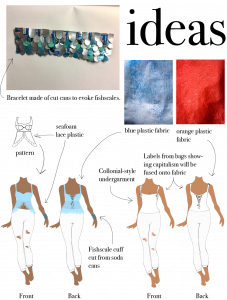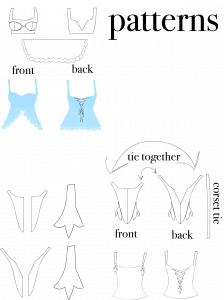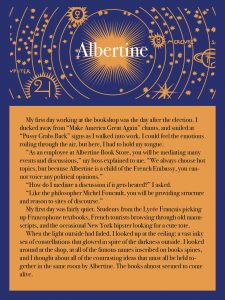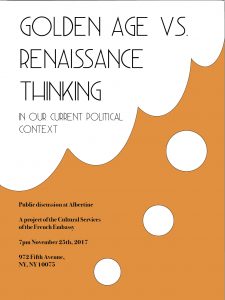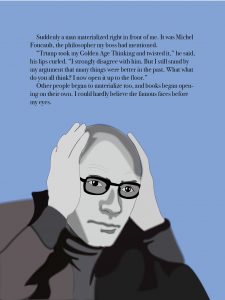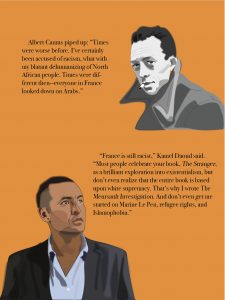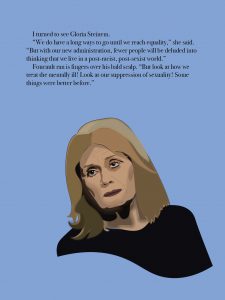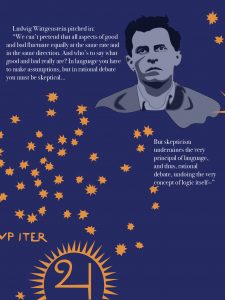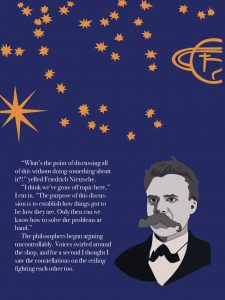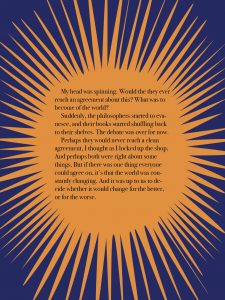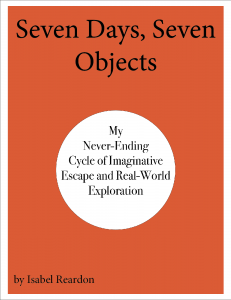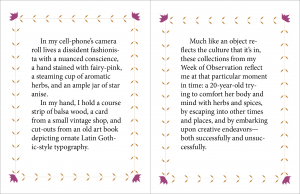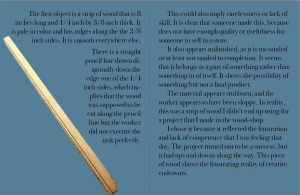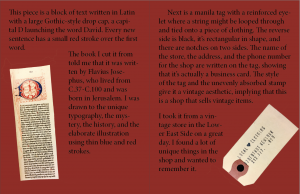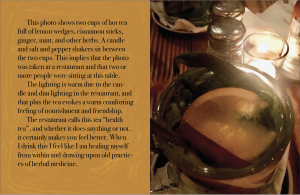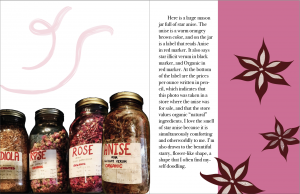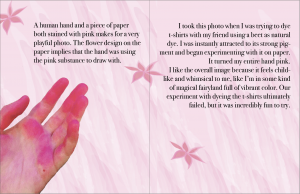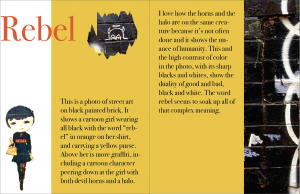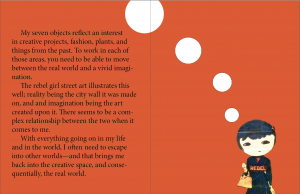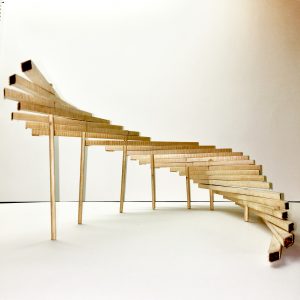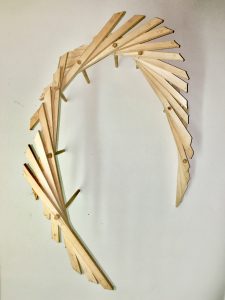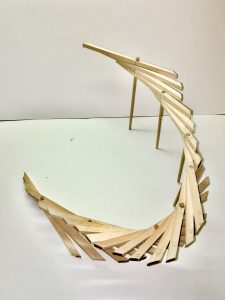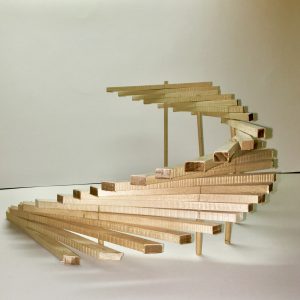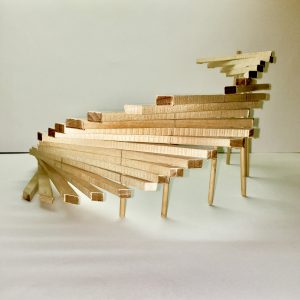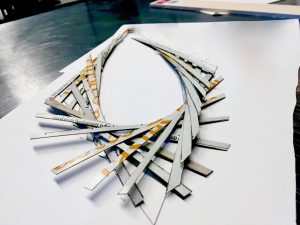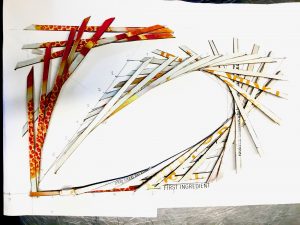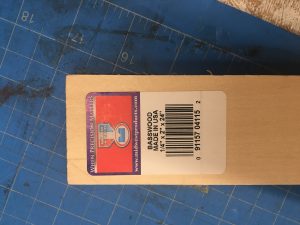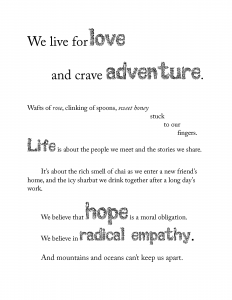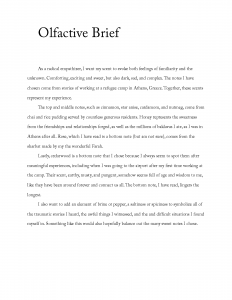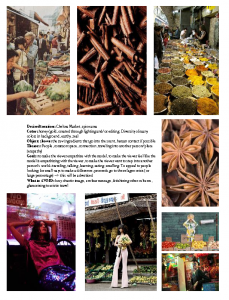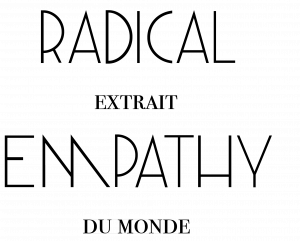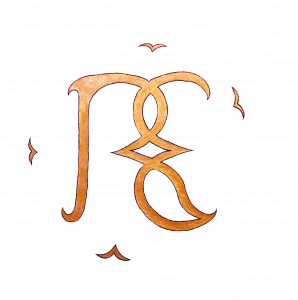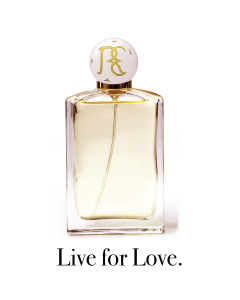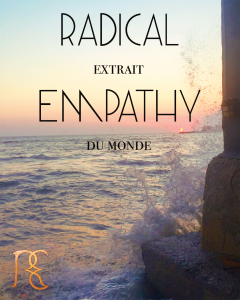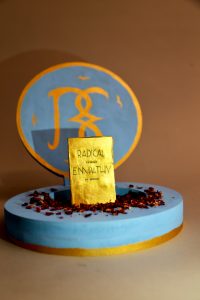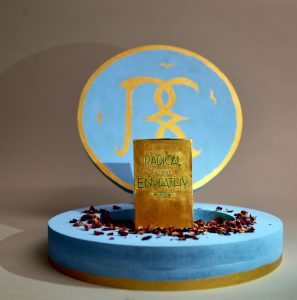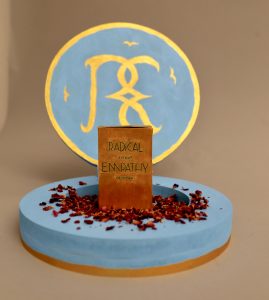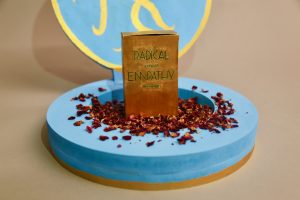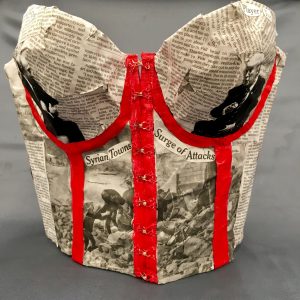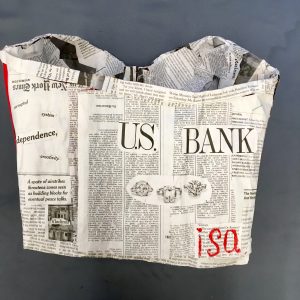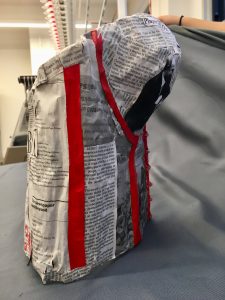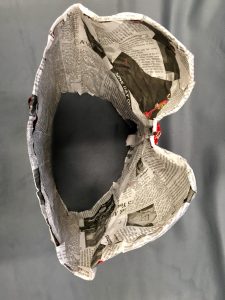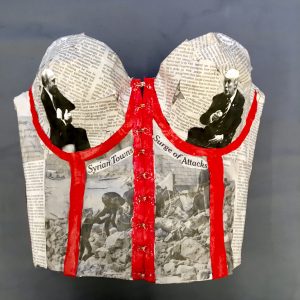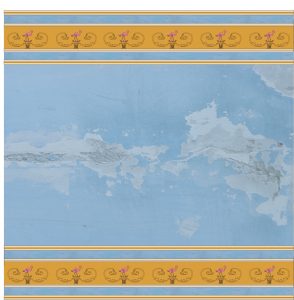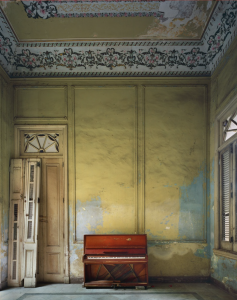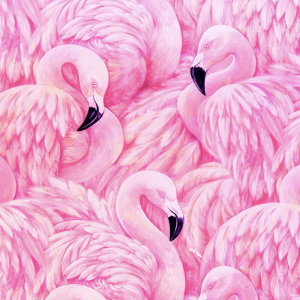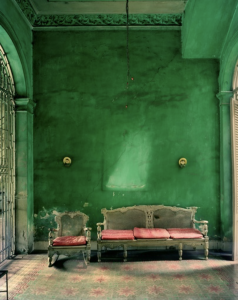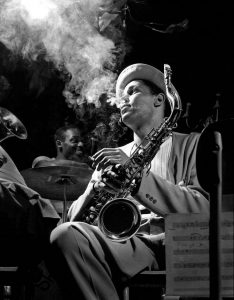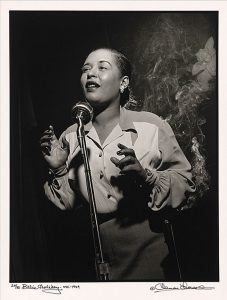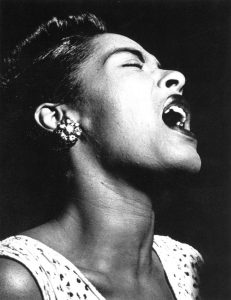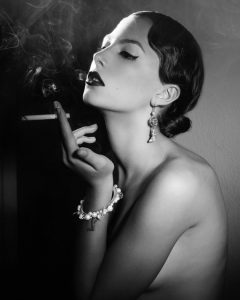In seminar I will be examining how fashion and business should incorporate ethics and activism to create a better world, and in Studio I will be putting this into reality by creating my own ethical line of garments. My imaginary company, Radical Empathy, will use sustainable materials and careful thought to create political statements through wearable art. Imaginary profits from each piece I make would go to the topic they’re each about.
More specifically, I will be releasing two bustiers using plastics that we are dumping into the ocean. I have collected plastic bags from beaches, streets, and my own consumption, fuse them together to make fabric, and make bustiers out of the material. The first bustier will be ocean-themed; the cups will resemble seashells and will be made out of a blue and white marbled fabric that I have created, and below I will have white plastic-lace cut in a scalloped design to create the look of sea-foam. To go with this look, I will have a wrist cuff made from cut soda and beer cans, resembling fish scales and thus reminding people that this was made by humans, and of the tragic effect we have had on nature. That is my idea for the ocean bustier; to evoke the ocean with human-made materials that actually pollute the ocean in the attempt to make people think critically about what we’re doing to our planet.
The second bustier will be in a colonial “stay” style, with tie-on sleeves. The fabric will be white fused with slogans and words from plastic bags I have collected, showing that capitalism is all around us. I want to show both the earlier times of colonialism and our current day capitalism, provoking the wearer and viewer of my piece to think about how the two connect. One of the slogans on a bag I found says I have says “I just HAD to have it!”, which could refer to both consumerism and the desire to occupy territory. Capitalism and things leftover from the colonial era are all around us, and can trap us in a suppressing society—much like a corset traps a woman’s body. With this look will be a colonial-style “mitt” made from white plastic-lace and clear plastic.
This project is about taking something unwanted and unsustainable, and reversing that. Each garment I make must spark conversation, raise awareness about an important issue, be aesthetically pleasing, wearable, and be sustainably manufactured. I envision customers wearing my garments to parties and events—places for conversations. I want people to see my work and ask what is is and what it means, sparking discussions about the cause and thus raising awareness and building empathy.

